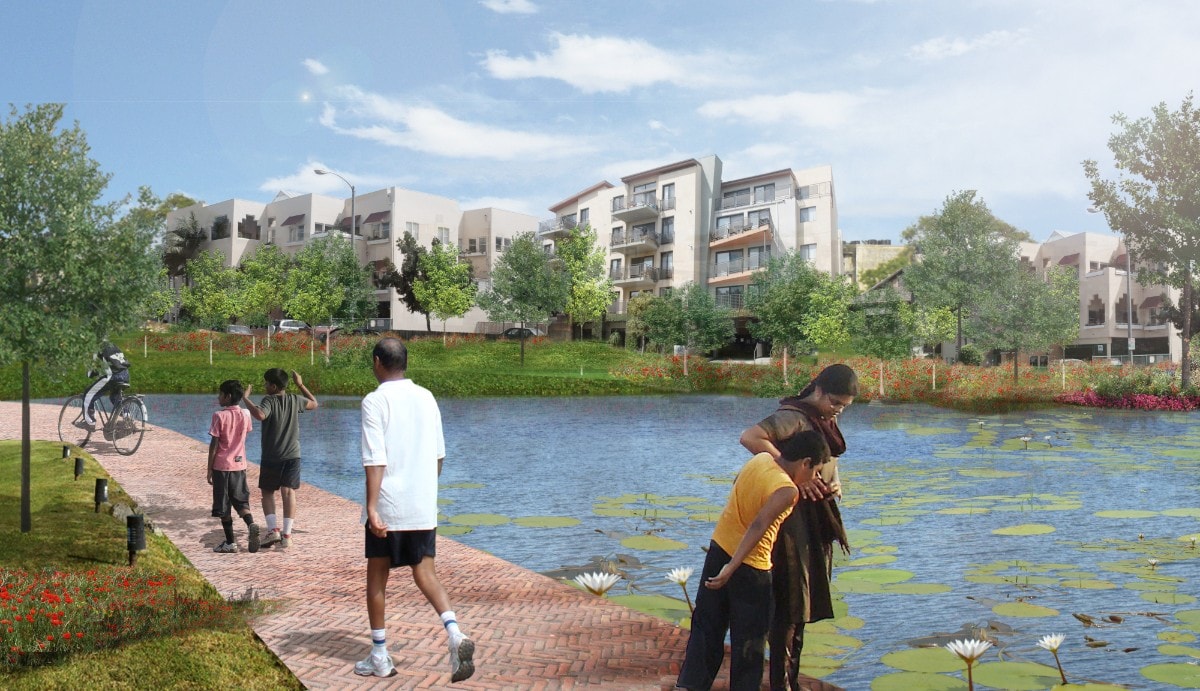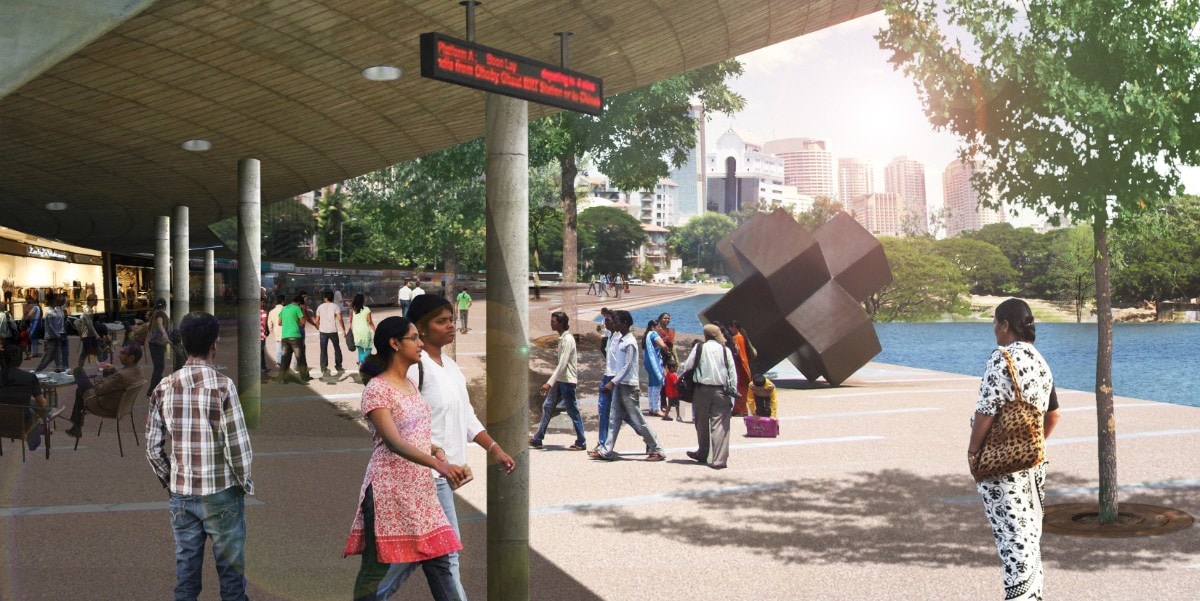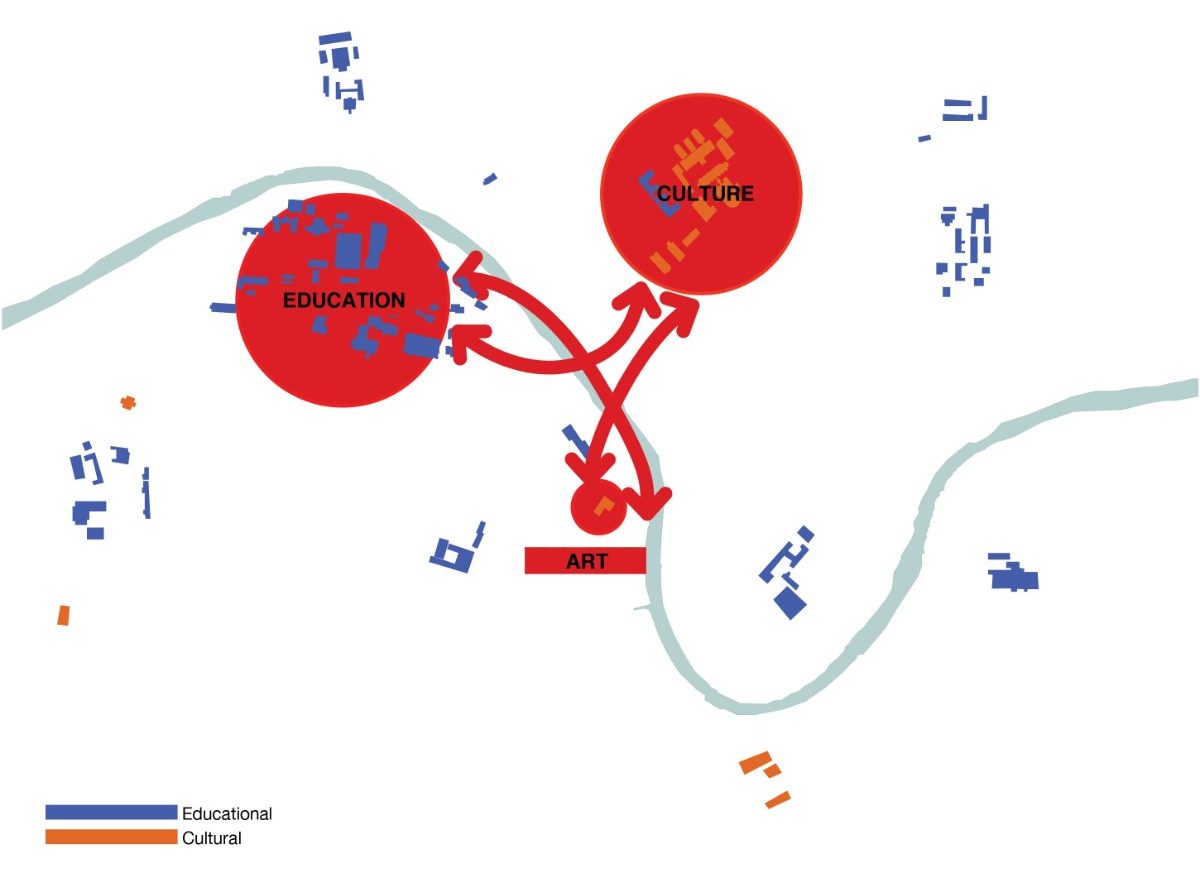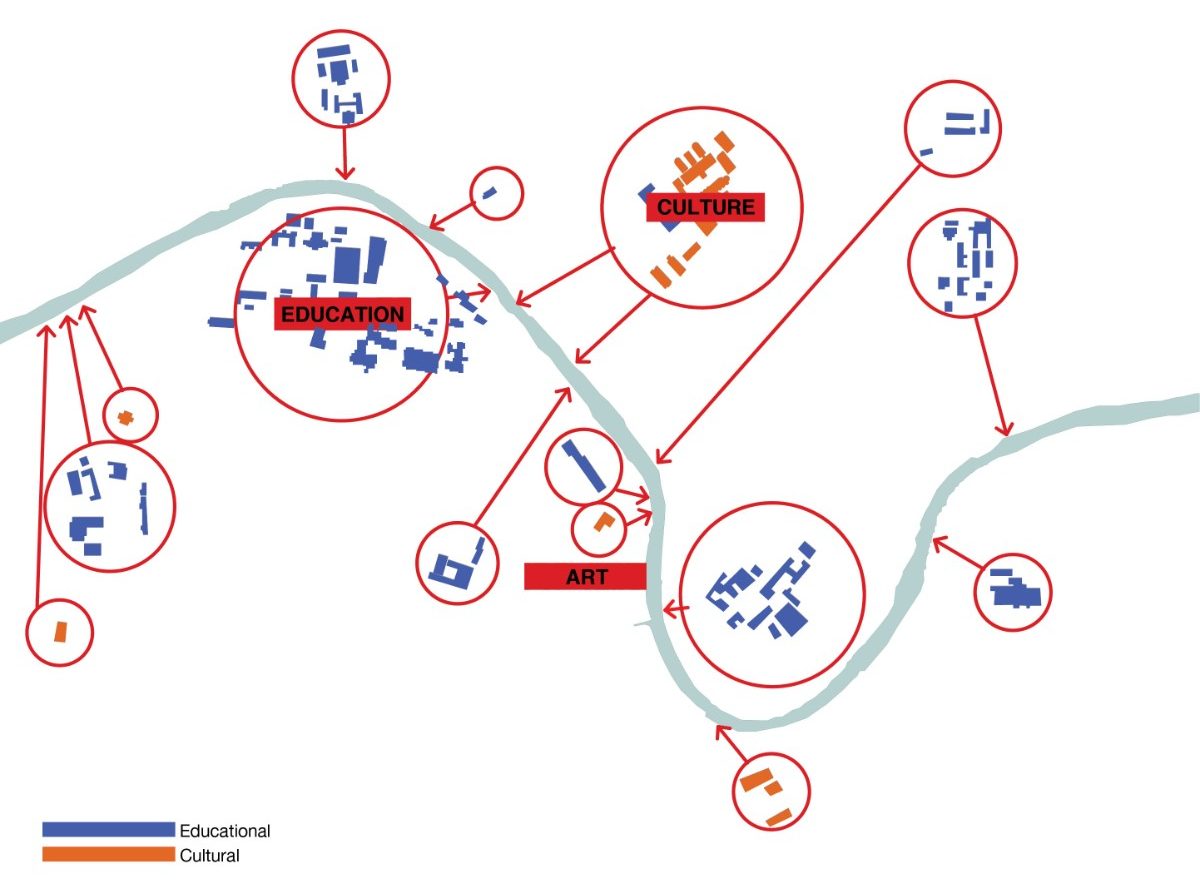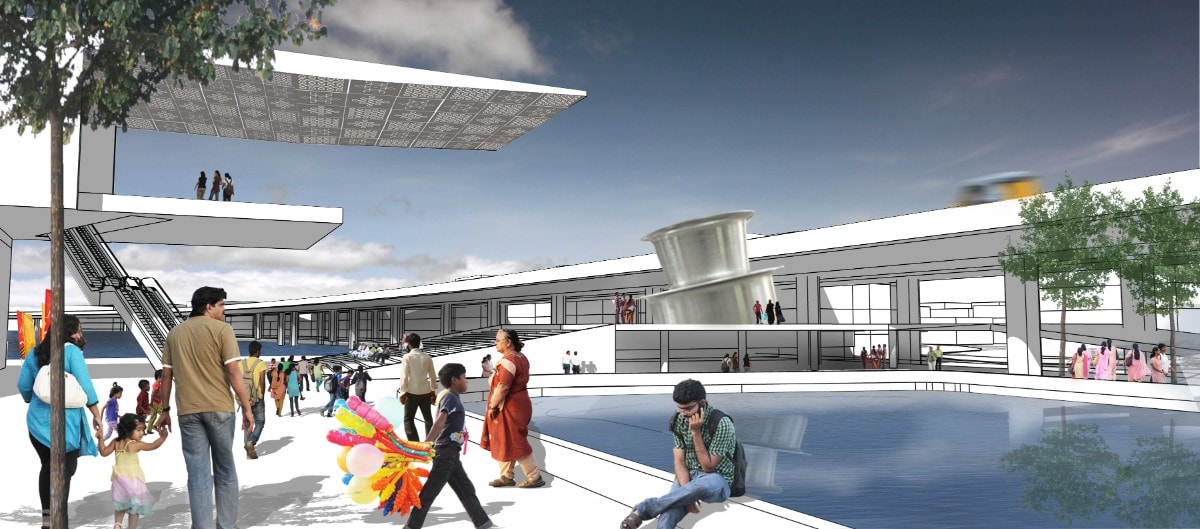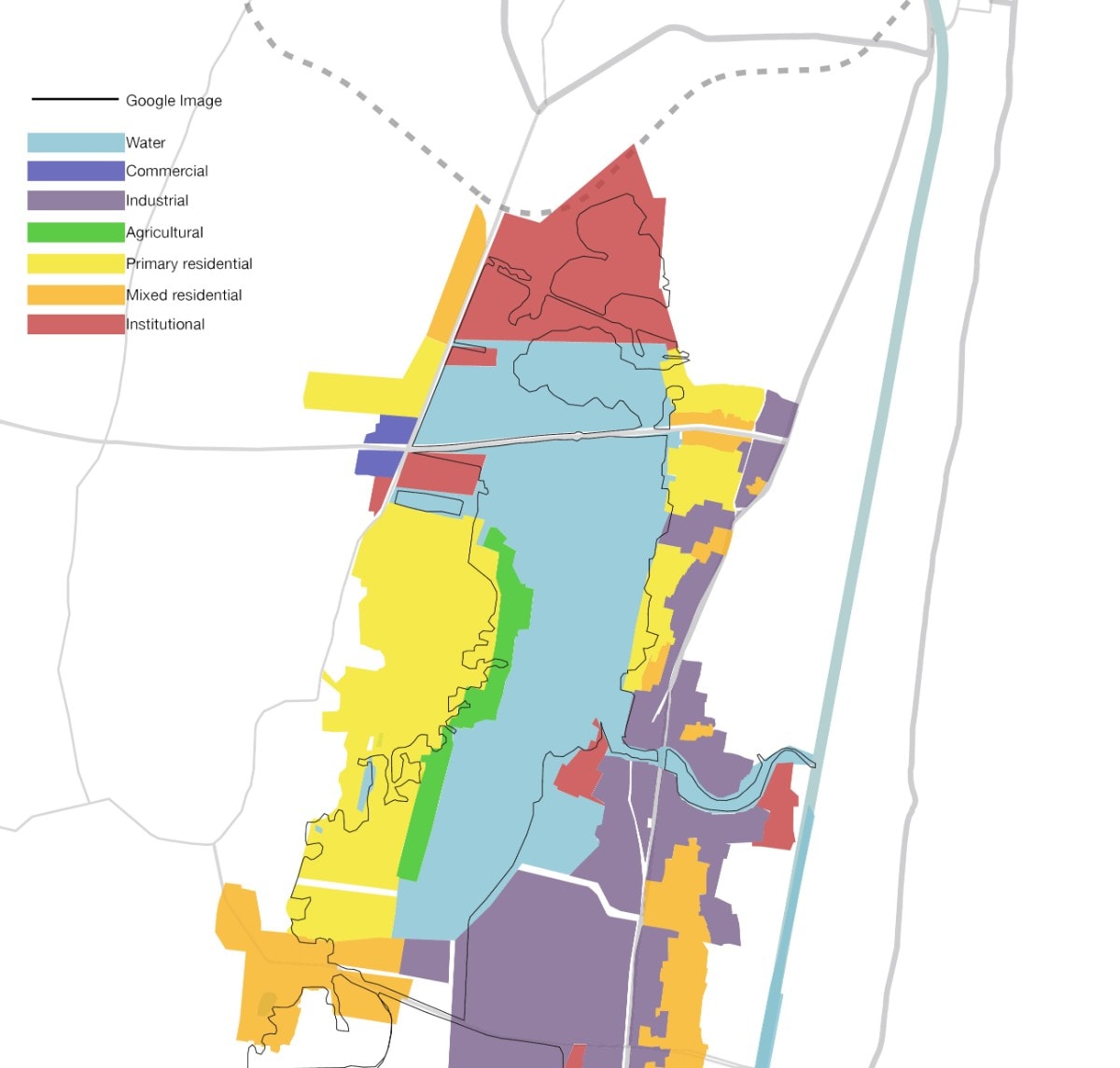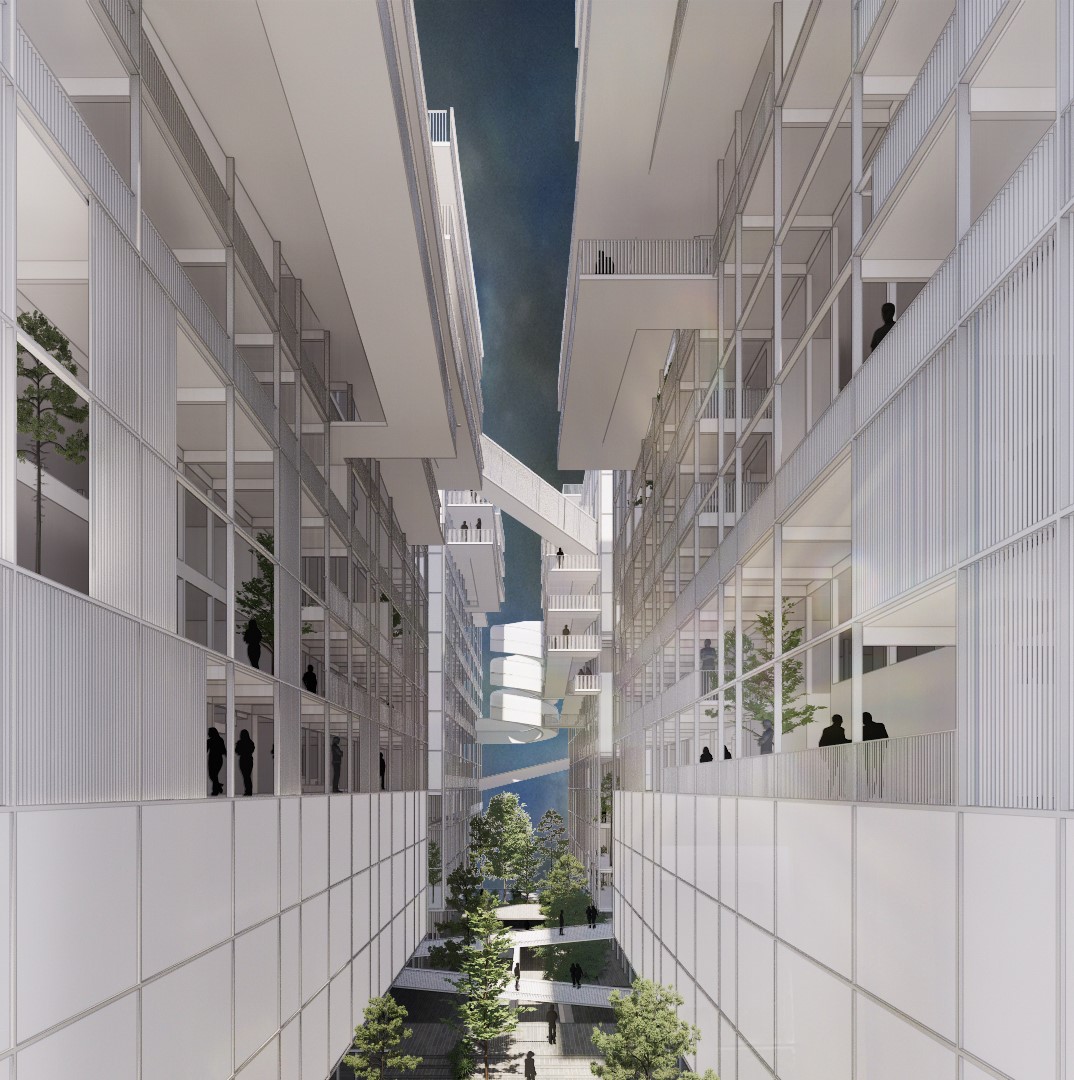
Public Spaces on Water Edge
Chennai has four times more Water than Green cover and Water covers more than 25% of the surface area of the city. It includes lakes, canals, tanks, rivers, and a marsh. If only we developed all these Water edges as public spaces. Chennai would have enough public spaces for each neighbourhood and city at large.
‘Public spaces on Water edge’, is an exploratory vision for water edges for Chennai in 2020. Through these projects, we show how to create a public realm for Chennai that is socially inclusive, ecologically responsible and beautifully designed. A series of pilot projects represented through ideas, images, plans, and diagrams are collated to demonstrate this.
These projects broadly work in the intersections of ECOLOGY, CULTURE, and INFRASTRUCTURE. They highlight the opportunity and demand for such places for a better quality of life. The following sample projects show a model for the development of public spaces.
Waterfront as Transit and leisure space – Chetpet Lake
Water bodies, natural or man-made dot all over Chennai. They have been characteristic to Chennai’s landscape. Well-developed waterfronts can ease the need for green areas within the city.
An ideal transit route along the waterfront, Chetpet Lake is located between the proposed underground metro station at Kilpauk Medical College and Existing suburban station at Chetpet connecting Chennai Central and Tambaram. This proposal provides an ideal condition for a safe and comfortable public space to thrive amidst daily commuters and a place for local neighbours to gather at other times of the day.
Public space for Culture – Museum Theatre Complex area to Lalit Kala Academy
Egmore and its surroundings have always been the setting for institutions that promote culture in Chennai. These institutions, state-run and privately managed exist independently in function without relating its existence to one another. The goal of the project is to highlight the need to connect these institutions (particularly large ones like Egmore Museum and Lalit Kala Academy), identify them with an experience, and reflect an image of the city along the redeveloped Cooum Riverfront.
Ecologically curated public space – Pallikaranai Marsh area
This project demonstrates a case of public space for leisure amidst an ecologically conserved marshland. ‘The uniquely heterogeneous hydrology and ecology of the Pallikaranai Marsh makes it one of the most diverse natural habitats of the country, with over 330 species of plants and animals.’ Based on this adaptive management plan for the conservation of pallikaranai marshland, this proposal explains the threats that lie ahead for the marsh, ways to address these challenges, as well as scope and opportunities for a public space while doing so. This proposal ensures an ecologically sensitive city-level public space with various degrees of habitation, ranging from a nature trail for enthusiasts to a leisure park for families in a unique landscape setting.
| Location | Chennai |
| Typology | Urban Design |
| Year | 2013 |
| Status | Concept |
| Client | Chennai City Connect |
| Collaboration | Care Earth Trust |
| Design Team | Mahesh Radhakrishnan, Ludovic Tiollier, Guneet Kaur Anand, Salome Houllier, Divya Ravishankar, Ashwin Ashok, Zahed Mirza, Vigneshwar, Karthick, Jesse Rosemoore, Diviz Studios |



